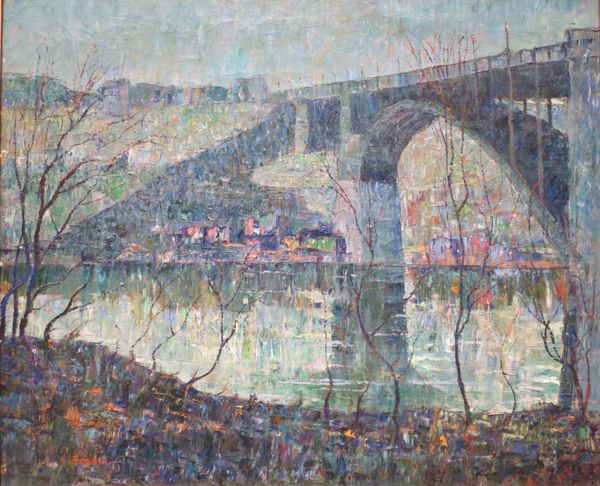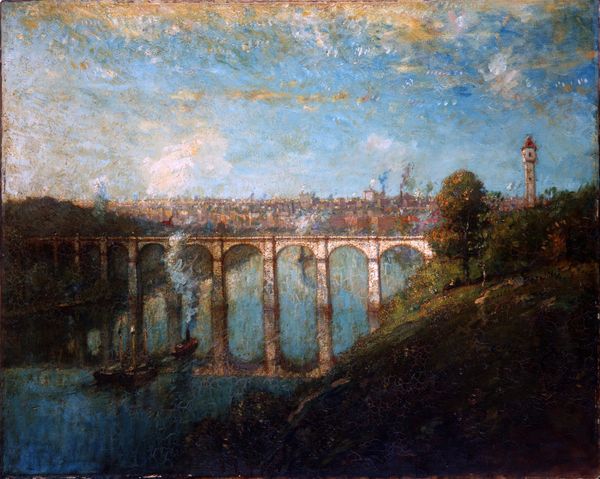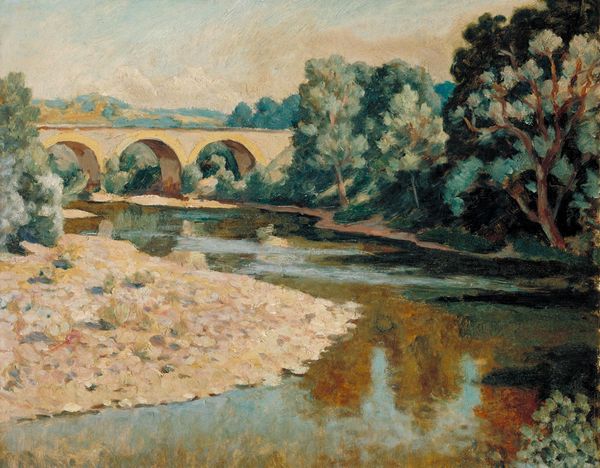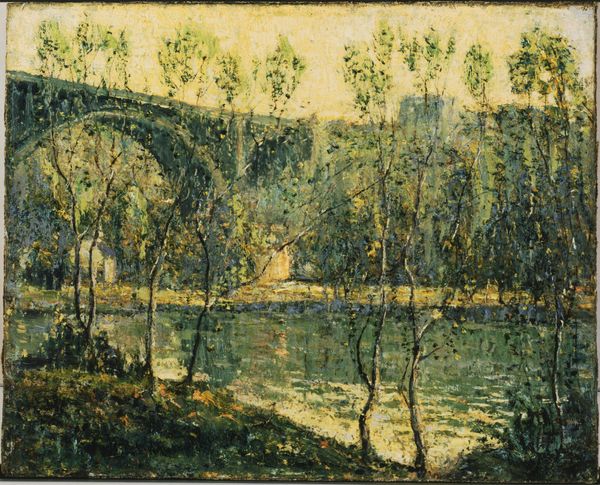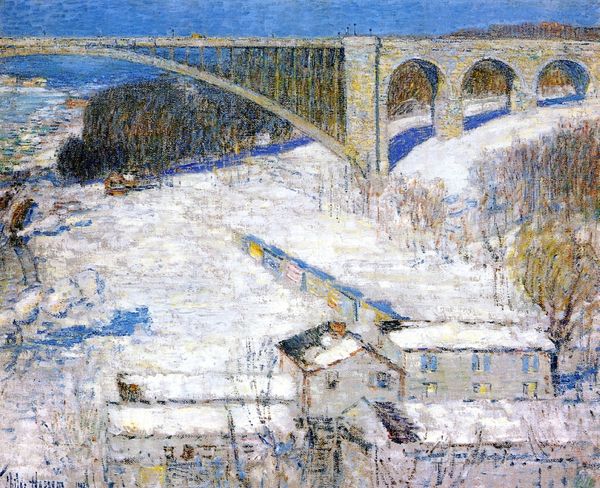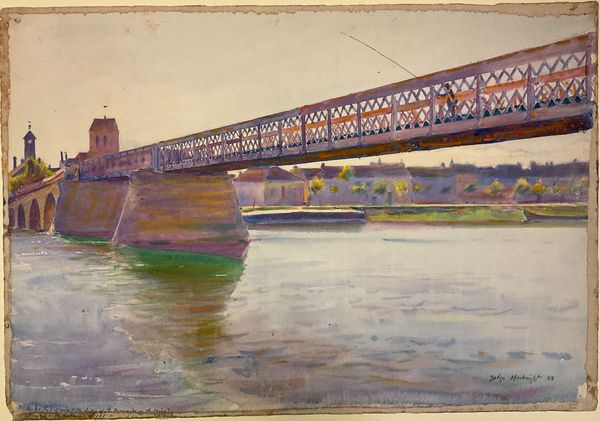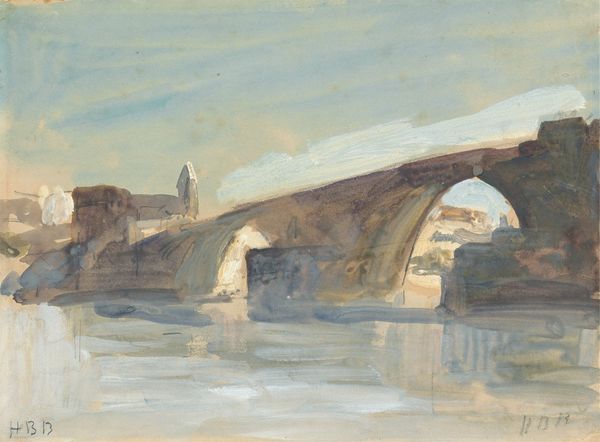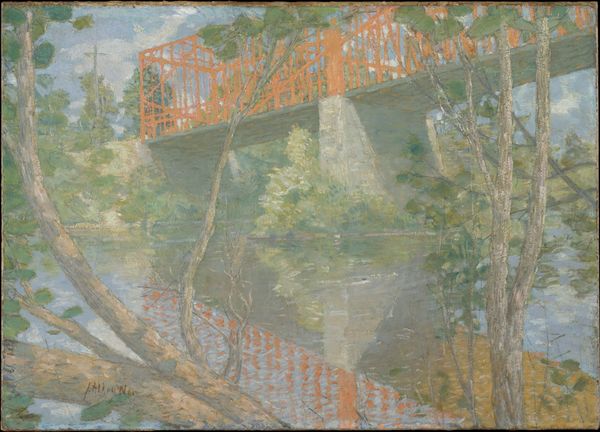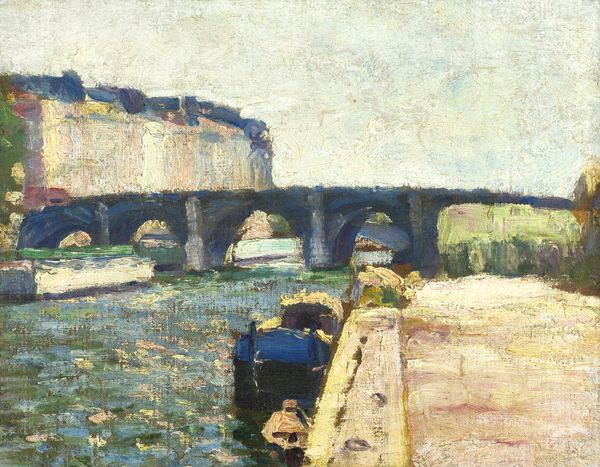
Copyright: Public domain
Ernest Lawson made this painting, Spring Night, Harlem River, with oil paint, probably in the early 20th century, though it's hard to pin down the exact date. Look at how he's built up the surface, layering strokes of blues, greens, and grays to conjure a nocturne. It's all about the materiality here. The paint is thick, applied with visible brushstrokes that give the scene a palpable texture, from the solid structure of the bridge to the flowing water beneath. Notice the reflections shimmering on the water, rendered with loose, broken strokes that capture the feeling of light on the move. Lawson seems to be relishing in the physical act of applying paint to canvas. It’s like he's trying to trap this fleeting moment, and pin it down in the heavy impasto of his brushstrokes. Lawson's work reminds me of those paintings by George Bellows, who was also part of the Ashcan School; they both had this knack for finding beauty in the everyday grit of city life, and that's where the real conversation begins. It’s that ambiguity, the sense of something half-seen, half-remembered, that makes this painting so compelling.
Comments
No comments
Be the first to comment and join the conversation on the ultimate creative platform.
